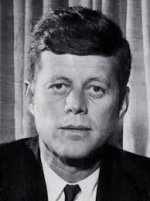signalmankenneth
Verified User
You need to brush up on your black history?!! This is Black History Month too?!!Who are they and why should we care?
You need to brush up on your black history?!! This is Black History Month too?!!Who are they and why should we care?
Fuck you asshole. You supported the assassination of your president so, fuck you.You need to brush up on your black history?!! This is Black History Month too?!!
Hidden Figures
https://en.wikipedia.org/wiki/Hidden_Figures
This part was very interesting to me:And then one day, at a family function in the 1950s, a relative mentioned to Johnson that the National Advisory Committee for Aeronautics, the predecessor to NASA, was hiring. They were specifically looking for African American females to work as “computers” in what was then their Guidance and Navigation Department.

Katherine Johnson: A Lifetime of STEM - NASA
Katherine Johnson loved to count. “I counted everything. I counted the steps to the road, the steps up to church, the number of dishes and silverware I washedwww.nasa.gov
Fuck you asshole. You support a draft-dodging, adulterous pedophile and oath-breaking traitor for president.Fuck you asshole. You supported the assassination of your president so, fuck you.
AI OverviewThis part was very interesting to me:
As Johnson worked on the problems, she would ask questions. She didn’t want to just do the work — she wanted to know the “hows” and the “whys” and then the “why nots.” None of the other women had ever asked questions before, but by asking questions, Johnson began to stand out. She was told that women didn’t participate in the briefings or attend meetings; she asked if there were a law against it. The answer, of course, was no, and so Johnson began to attend briefings. NACA was just beginning its work on space. Space itself may be perceived as a series of plane surfaces, and as Johnson became known for her training in geometry, she began to work with the team more and more. Eventually, she became known as a leader, and the men increasingly relied on her. She remembered quite clearly her experience at the time. “The women did what they were told to do,” she explained. “They didn’t ask questions or take the task any further. I asked questions; I wanted to know why. They got used to me asking questions and being the only woman there.” It was this inquisitive nature that made her a valuable resource to the team and the only woman at the time to ever be pulled from the computing pool to work on other programs. Then in 1962, President John F. Kennedy charged the country to send a man to the Moon. Johnson became part of the team, and she began to work on calculating the trajectory for America’s first space trip with Alan Shepherd’s 1961 mission, an early step toward a Moon landing. She went on to do the calculations for the first actual Moon landing in 1969.


Maybe that's why the Republicans shot him?AI Overview
View attachment 43102
View attachment 43103
View attachment 43104
President John F. Kennedy (JFK) supported legislation and actions to promote fair employment practices and end discrimination in hiring.
Early DEI.
Maybe that's why the Republicans shot him?

The John Birch Society were early MAGAts....and you know how much MAGAts hate lefties!
You might be on to something.The John Birch Society were early MAGAts....and you know how much MAGAts hate lefties!

No, they didn't. That's hyperbole.They put white men in space.
What did they do?No, they didn't. That's hyperbole.
The job calculator used to exist. Calculators did mathematical operations and calculations for engineers using slide rules and such before the advent of modern electronic / scientific calculators and computers. Those made the job obsolete. Calculators, as a job, could be found in most areas of industry and science where lots of math was involved.Oh you mean that math ladies who had actual competence?
Terry thinks they swept the floors and slept at their desks as DEI hires.What did they do?
See my post above.What did they do?
Translation: Black women were useless in the Space Race.The job calculator used to exist. Calculators did mathematical operations and calculations for engineers using slide rules and such before the advent of modern electronic / scientific calculators and computers. Those made the job obsolete. Calculators, as a job, could be found in most areas of industry and science where lots of math was involved.
How does that contradict with the fact that they sent men into space?The job calculator used to exist. Calculators did mathematical operations and calculations for engineers using slide rules and such before the advent of modern electronic / scientific calculators and computers. Those made the job obsolete. Calculators, as a job, could be found in most areas of industry and science where lots of math was involved.
And, this is why everyone here knows you're retarded...Translation: Black women were useless in the Space Race.
At least you didn't call me a racist because I posted "Space Race".And, this is why everyone here knows you're retarded...

